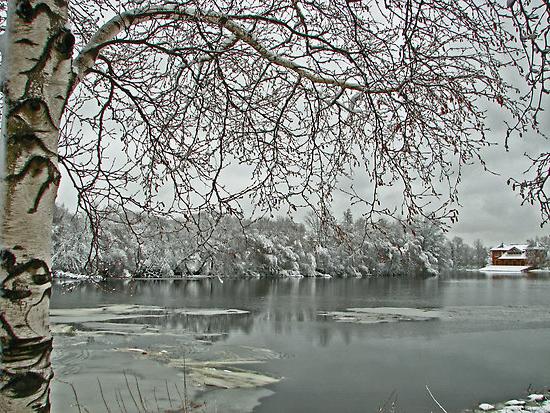If you ask a modern Russian school student what character most fully characterizes his country, he, without hesitation, will answer: "Birch." Yes, in every state there is an officially approved flag, anthem and coat of arms. But there are also generally accepted symbols - images of animals, birds or trees. For example, in Ukraine these are red clusters of viburnum, and in Moldova - a bunch of grapes. Symbols also have cities. And they often do not match the image on the coat of arms. For example, Kiev has an angel in the official sign of the city, and its symbol is a leaf of a chestnut. So anything happens. And why do we have a birch - a symbol of Russia?

This tree differs from others in its white trunk. Throughout the European North - from the Scandinavian Peninsula to the Urals, birch was revered. Especially she was loved by the Finno-Ugric tribes, for whom this tree was an object of worship. By the way, this love is expressed in the fact that the name Birk exists, which means "birch". And in the Germanic runic letter, the 18th letter of the alphabet - Berkan - was interpreted as a symbol of fertility and growth. In Celtic Druids, the tree is included in the horoscope (people born between December 24 and January 20 were under the auspices of the birch and the sun). But the ancient Slavs treated the snow-white tree with a green curly crown ambivalently. It was believed that there is an impure force. Why is birch a symbol of Russia if our ancestors associated a tree with death?

Russian proverbs and riddles speak of the benefits of this plant. Here, for example: "Which tree brings four benefits: the first - the health of the sick, the second - the well to the people, the third - the light to the eyes, and the fourth - the dead swaddling?" Decipher the riddle: a birch broom expels ailment from the body, you can quench your thirst with juice, and illuminate the dwelling with a beam. But what does it mean - swaddling the dead? The fact is that the deceased laid in the dominion, wrapping, instead of a shroud, with birch bark. Thus, among the ancient Slavs, birch is a symbol of death or misfortune. Previously, houses were not set in a grove of white-trunked trees, and such a beauty was not planted in the courtyards, believing that the marriage of those living nearby would be unfortunate. It was believed that throwing birch logs into the stove was for bugs in the house, and that witches fly on brooms made exclusively from this tree. And in the green curly foliage mermaids are hiding.

The first one to change the attitude towards this tree in the mass consciousness was Sergey Yesenin. It is because of his lyrics that birch is a symbol of Russia. The poet devoted many warm words to this gentle tree. His poems were read by Russian emigrants in distant exile. On the
Cote d'Azur or among the alpine lakes, these people yearned for their forever lost homeland. For them, the birch forest, which is constantly mentioned in the
works of Yesenin, has become a kind of symbol that generates nostalgia. Thus, the negative perception of this tree seems to be forgotten, while the positive remains.
Now we can recall that in the language of Kievan Rus, the name of the month, March, was dedicated to the white-barrel beauty. By the way, in the modern Ukrainian language it is “birch”, a time when birches cry. You can also recall the old ritual holiday, which was once celebrated in Russia - Semik (Thursday, the seventh week after Easter). On this day, the girls went to the grove and tied the tops of young birches, decorating them with ribbons. At the same time they led round dances and sang songs. Slender and flexible in light sundresses among summer foliage, they themselves resembled white-trunked tender trees. Therefore, it is very good that birch is a symbol of Russia, because among the Slavs it has always been a symbol of rebirth.